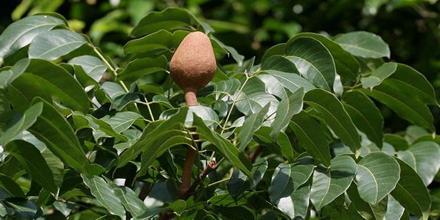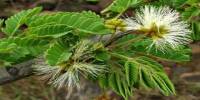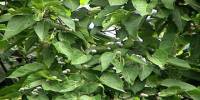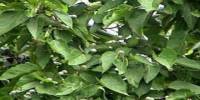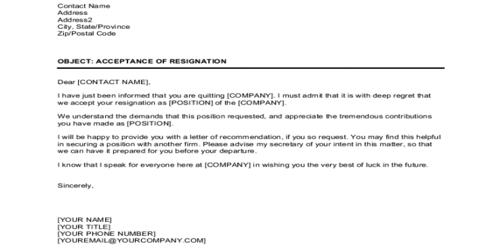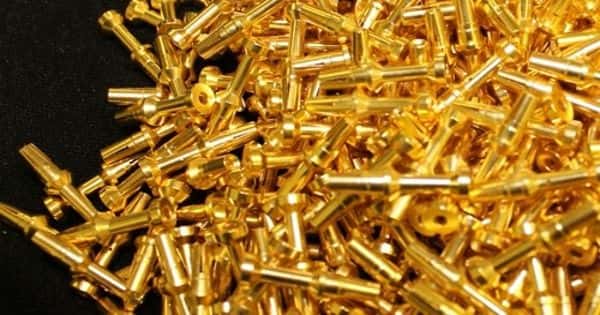Phytochemical screening, Membrane stabilizing activity and Cytotoxicity of ethanol extract of
Swietenia mahagony leaf
Swietenia mahagony is such a medicinal plant that has numerous significant properties. Different parts of this plant such as bark, stem, leaves, trunk, seed, fruit and flower exert medicinal efficiency that can be incorporated to treat diverse ailments and can develop new formulas essential to treat newer afflictions. Swietenia mahagony leaves were focused in this study which was extracted with ethanol as a solvent. In the current study, ethanol extract was subjected to phyto-chemical screening, membrane stabilizing activity as well as brine shrimp lethality bioassay. Phyto-chemical screening was done by using distinct reagents intended for identifying primary and secondary phyto-chemicals such as tannins, flavonoids, alkaloids, carbohydrates, glucosides, glycosides, saponins etc. It was found from the analysis that ethanol extract of Swietenia mahagony leaves contains carbohydrates, saponins and tannins primarily. From the membrane stabilizing assay, where acetyl alicylic acid which is a well-known anti-inflammatory drug was employed as reference standard reported to have minimum membrane stabilizing effect while incorporated with ethanol extract of leaves of Swietenia mahagony. In case of brine shrimp lethality bioassay, the ethanol extract showed satisfactory cytotoxic effect that permits more sophisticated assay to be executed in the future. To conclude, it can be claimed, the results obtained from the experimental data were appreciating enough to run further studies considering different parameters such as using different solvent type- methanol, ethanol, acetone, chloroform etc, activity of the plant extract on to evaluate anti-diabetic, anti-malarial effect etc.
Introduction
Swietenia mahagoni (Bengali name: Mahagoni) is a chuckle frail and prudent paramount forest arbor endemic to West Indies (Family: Meliaceae). It can stretch 75 feet in altitude with a 50 feet expanse. (Bhurat et al., 2011). It is a moderate to massive evergreen plant topical to Jamaica, Cuba, Southern Florida, Hispaniola and Bahamas. This species is extensively scattered in South Asian countries like India, Sri Lanka and Bangladesh. Swietenia mahagoni flowers bloom on panicles appearing in the axils of the leaves. The panicles emerge in the spring. Flowers are small and less than 0.3 inches wide. Flowers are yellow or green in color with characteristic fragrance. Swietenia mahagoni has sundered male and female flowers on the identical plant (monoecism). It is a crucial medicinal plant and has several kinds of therapeutical consciences for example anti-diarrheal and anti-malarial activities. The porridge of the bark is widely employed as an anti-pyretic that can be united with its function as an anti-malarial prescript.
Various parts of the plant have been used by the traditional healers for the treatment of fever, malaria, cancer, anemia, hypertension, dysentery, amoebiasis, chest pain, diarrhea, depurative (The action or process of freeing something of impurities) and intestinal parasitism. (Rahman et al., 2014).
Swietenia mahagoni is a trifling prolix, mediocre dimensioned creeper topical to West Indies. Swietenia mahagony is ordinarily called as caoba, acajou, West Indies mahogany or caoba dominicana around different parts of the world. It belongs to the species of genus Swietenia which came from chinaberry family, i.e-meliacea. The sections of the creeper have been applied to vet numerous ethnic maladies like diarrhea, malaria, astringent, hypertension, diabetes, etc. locally. The fruits of Swietenia mahagony plant deliver strong anti-hyperglycemic activity. The oil of the seed is being employed as a substitute physique ointment for a wide extent of itches, wounds and skin cuts to promote the recuperation action in African countries. The bark decoction is immensely applied to enhance craving, as an energizer in case of tuberculosis, also to cure dysentery, fever, toothache, anemia and diarrhea. The decoction of leaves immensely employed to vet nerve affliction. Moreover, the seed admixture is applied to mollification from angina. (Naveen and Urooj, 2015).
Classification of Swietenia mahagony
- Kingdom: Plantea
- Subkingdom: Tracheobionta
- Super Phylum: Spermatophyta
- Phylum: Magnoliophyta
- Class: Magnoliopsida
- Sub class: Rosidae
- Order: Sapindales
- Family: Meliaceae
- Genus: Swietenia
- Species: mahagony
Swietenia mahagony which belongs to the family meliaceae is a bluff, evergreen chuckle arbor endemic to native South America, America and Mexico. This plant is predominantly tamed at sultry orbs, for instance Malaysia, Southern China and India. This plant accommodates cardiac glycosides, terpenoids, phenols, alkaloids, volatile oils, antraquinones, long chain unsaturated acid, saponins, flavonoids and phospholipids. This plant specifically incorporates 45 limonoids such as augustineolide, swietenine, khayasin, swietenolide, swietemahonin, andirobin, 7- deacetoxy-7- oxogedunin, proceranolide, also 6-O-acetyl swietonolide, gendunin, 2-hydroxy-3- O-tigloylswietenolide, swiemahogins A and B which belongs to the structural class andirobin, mexicanolide, triterpens, phragmalin, chlorogenic acid and tetranortriterpenes. The plant further encompasses swietenine dimeric triterpenoid, tetranortriterpenoid and triterpenoid. Ordinarily, leaves of swietenia mahagony have been reported significantly for the prescription of febrifuge, colds, cataract and diarrhea. Swietenia mahagony seeds have been applied for the regimen of coughs, diabetes, cancer, intestinal parasitism, amoebiasis, chest pains, malaria and hypertension. The bark has shown significant astringent property for curing wounds. (Ayyappadhas et al.2012).
Description of the plant
Swietenia mahagony is a much extensive plant. It extents about 30-40 meter in stature along with a girth of 3-4 meter. It was reported that in plenteous condition the plant can attain 60 meter altitudes and 9 meter circumferences. Its stalk is successive, tubular, having a reinforced foundation. Its lath is jagged, shed into cramped fragments. Swietenia mahagony leaves are winged and extend up to 60 cm; blades are often 6 to 16 in number, ellipsoidal in shape, edged, marginally awry. The color of the leaf is blonde green and become dark green when grown up and matures. The flowers are 8 mm diagonally. Sepals are greenish-white in color, elongated and rounded, 4 mm elongated and stern. The fruit is actually xyloid capsule looking like a chuckle up-turned club. It’s about 12.5 x 7.5 cm and steep which is shown in figure 1.1
The term ‘Swietenia’ belongs to a botanist, Gerard von Swieten (1700-1772), who was also a physician to Maria Theresa from Austria. The word ‘mahagony’ signifies a hefty leaves and retrieved from Greek word ‘makros’ means large and ‘phyllon’ indicates leaf. Swietenia mahogany trees have both male and female flowers where male flowers are 10 times than female flowers. Nevertheless, the flowers of both phalluses are analogous. Plants are often serviceably dioecious.
In blended inflorescences, male flowers tile first, however self-pollination may fallout. Fruiting along with flowering is precisely patterned. The plant gives fruits once each year but while it turns 15 years old, it propagates fruits on a regular basis. Seeds carry a tenuous, tail like feather which initiate rotation while falling from the tree. As a result, the seeds spread and displaced by air for about 500 meters away from the progenitor plant.
The species has few tares expectation and may assail endemic forest communities, precisely following inconvenience. The plant should not be strung in intimate vicinity to places of extreme nature preservation purport. Swietenia mahagony augments excellent on well-exhausted areas with moderate to massy lands. Juvenile plants are reasonably enduring to dimness, but circumstances for best hike compel complete overhead light linked with flank conservation. In garth forest management, Swietenia mahagony has constantly been planted at 10 x 3 m (333 stems/ha, Stocking rate (stems/ha), Trees in plot / Plot area (ha) as it claims plenty contents of light. Plantations presiding at such comprehensive interval occasionally required thinning if not removed collectively the infected plant. The tree itself is trimming thus additional snipping is unnecessary. Swietenia mahagony has a gyration age of 30-35 years while raised for log, with an ultimate stocking amount of 150-250 stems/ha.
The utmost significant murrain of Swietenia mahagony is the spawn offset borer mainly Hypsipyla robusta, which is again a plantation lues. Invasion by the particular pest can propagate to pestilence ratios, exerting in impoverished trunk formation as well as a massive wane in wood standard. Orthene, which is a systematic insecticide containing acephate as most potential ingredient, has evidenced an operative chemical bridle of this lues. Another mahogany web canker called Macalla thyrsisalis, sakes destruction along with webbing all over the Greater Antilles. One more mahogany shoot borer named Hypsipyla grandella, clefts within the stems, blossoms and shoots of the plant. In addition, coffee plant borer baptized Apate monachus, barrages both existent and defunct plants, which pierce intensely into branches, contorting trunks, and erecting them susceptible to breakage in high winds in Caribbean. Again undisclosed sprout borers, a canker, also snout beetle- Pachnaeus litus, every one onfall the plant in Haiti.
The seed capsules are attacked by the beetle thus defoliate the plant. Moreover, the wet-wood termite named Nasutitermes costalis depletes defunct branches and sporadically the tree trunks in Puerto Rico. In Fiji, a fewer deliberate dispute of ambrosia beetle bruise of standing trees has been recorded. The scotylid flea called Xylosandrus compactus, lays eggs in arcades of the stalks of vines in the patio, which provokes to their knead, it further persecutes alive sprigs and branches of earlier plants. More petty murrains audited in empirical plantings are the leafnurtured caterpillar Attacus atlas and the leaf clipper bee Megachile sp. Leaf decaying fungus Phyllosticta swietenia bring about defoliation beneath moist nursery proviso in Puerto Rico. Maladies of seedling in Haiti comprises anthracnose, leaf bleb, damping off, leaf speck and stem blight. (Orwa et al., 2009).
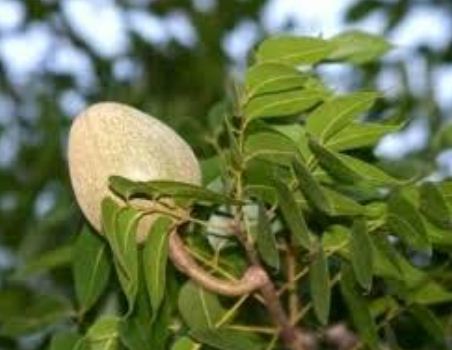
Figure: Swietenia mahagony leaves along with seed
Various Extraction techniques
In pharmaceutics, extraction is applied as the clop, also embroils the hiatus of therapeutically abuzz fractions obtained from animal or plant minutes from the slothful or lethargic compounds by employing particular solvents in particular graded of extraction methods. The yields that procured from different fractions of plants are comparatively filthy fluids, sometimes semisolids or also can be ruffians intended only for exotic purpose. The extracts involve diverse groups of significant preparations recognized as powdered extracts, tinctures, decoctions, pilular extracts which is also known as semisolid extracts, infusions and fluid extracts. These specific preparations ordinarily have been termed galenicals, labeled after the second century specialist Galen who was from Greek. The major intention was to promote accepted expulsion methods for raw remedies that will serve as a therapeutically yearned segment and to phase out the inactive portion by dealing with a chosen solvent commonly referred as menstruum (A solvent, exclusively one used in extracting components from the tissues of organisms). The resulted product that was obtained can be apt for different purposes as a pharmacological carrier in the structure of fluid extracts as well as tinctures, this might be further formulated to be associated in any dosage pattern like capsules or tablets. Moreover, this might be fractionated to separate every single chemical essences like hyoscine, vincristine (Vincristine is an anti-cancer chemotherapy drug) and ajmalicine (ajmalicine, also known as raubasine, is an antihypertensive drug used in the treatment of high blood pressure), which are potential prescripts. So, to receive the eventual attribute of the verdant drug it is essential to make the extraction methods up to the mark. (Handa et al.,2008).
In consideration of extract therapeutical constituents from plant parts, the following consecutive stratum is engaged:
- Extent wane(size reduction)
- Expulsion
- Straining
- Condensation
- Parched (drying)
The core parameters affecting the attributes of an extract comprises
- Plant segments which was employed as initial constituent
- Method of extraction
- Incorporation of specific solvent for particular extraction Properties of the plant phyto-chemicals which was extracted relies on the following parameters:
- Characteristics of the plant fragment
- Its archetype
- Measure of technology
- Fluid extent
- Dimension of the particle(Tiwari et al., 2011)
Effective extraction of remedial arbors includes some general procedures, commonly termed as fermentation, maceration, decoction, percolation, infusion, digestion, hot continuous extraction (soxhlet), sonication, counter-current extraction, supercritical fluid extraction etc.
Maceration
This process includes the plenary or coarsely powdered crude drug which is arrayed in a reservoir with cork along with the particular solvent and conceded to remain at room temperature for about at least 3 days with legionary turmoil up to 6-7days whilst the liquefiable elements has fully liquefied. After that the composition is subjected to filtration. The damp solid material also known as marc is then congested, and the coupled fluids are resolved by straining. (Handa et al., 2008).
Advantages of maceration
This process is beneficial for both initial and bulk extraction. This is a very cheap and simple process. Here limited solvents are used. This maceration process can give selective extraction.
Disadvantages of maceration
The major problem of this procedure is that it is quite time- consuming, it takes few hours up to several weeks. Maceration is usually less aggressive, extracting fewer actives.
Infusion
Vernal infusions are produced by emaciating the raw drug for a concise course interval with warm or gelid water. It is the sleazy mixtures of the smoothly dissolved components of raw physic. (Handa et al., 2008).
Digestion
It belongs to a kind of maceration where bland fervor is applied in the technique of removing extracts. This can be recommended while tolerably raised warmth is not challengeable. The ability of the corrosive of the menstruum is therefore tumid. (Handa et al., 2008).
Soxhlet extraction
Soxhlet extraction is recommended specifically only when the intended component has a confined solubility in a particular dulcet, also the contaminant is not soluble in that dulcet. If the aimed component has an elevated solubility in specific diluents then an innate straining can be associated to detach the components from the insoluble matter. The convenience of soxhlet extraction process is illustrated in lieu of various fractions of torrid solvent being promoted via the exemplar; barely a single unite of solvent is reused. The inconvenience of a soxhlet extraction process is that it rarely be incorporated for heat- hectic components as enhanced temperature may guide to erosion of active components. (Tiwari et al., 2011).
Solvent selection
Outstanding ascertainment of morphologically abuzz components attained from plant material is broadly reliant on the kind of corrosive employed in the squeezing out process. Characteristics of a spacious diluent in plant extractions involves- few toxicity, serenity of dispersal at little fervor, amelioration of swift physiologic exploitation of the extract, protective act, impotence to sake the extract to intricate or separate. The considerations influencing the preference of solvent include:
- Pace of extraction
- Variety of different components to be extracted
- Variety of restrictive elements extracted
- Amenities of posterior management of the extracts
- Toxicity of the diluents in the bioassay techniques
- Probable hygiene impendence of the extracts
The preference of solvent is altered by the expectation of the extract type. As the final upshot will comprises vestiges of remaining solvent, thus the solvent should not be hazardous and should refuse impediment to the bioassay technique. The selection will further bet on the desired constituents to be extracted. (Tiwari et al., 2011).
Diverse solvents that are employed in the extraction methods comprises water, methanol, ethanol, chloroform, acetone etc.
Water
Water is such an ecumenical diluent associated with extraction of plant materials retaining antimicrobial characteristics. Although conventional physicians incorporates water for a long period of time, however organic solvents have been showed improved congruent anti-microbial property in comparison to water extract. Also, water soluble flavonoids (mostly anthocyanins) have no antimicrobial significance and water soluble phenolics only important as antioxidant compound. (Tiwari et al., 2011).
Alcohol
The topmost action of the ethanol extracts in comparison to the aqueous extract can be associated with the appearance of greater extents of poly-phenols against aqueous extracts. This clarifies that alcohols are defter in cell walls and seeds erosion that exerts non-polar aspect and sakes poly-phenols to be discharged out of cells. Additional adjuvant interpretation for the diminution in action of aqueous extract can be related to the enzyme poly-phenol oxidase, that humiliates poly-phenols in aqueous extracts, since in ethanol and methanol this enzyme are slothful. In addition, water is an advanced intermediate for the development of the pollutants over ethanol. The greater concentrations of additional bioactive flavonoid components were encountered with 70% ethanol on account of its greater polarity over sacred ethanol. While addition of water was executed to the sacred ethanol up to 30% for manufacturing70% ethanol, the polarity of diluents was elevated. Moreover, ethanol was reported to be accessible to interpolate the cellular membrane to extract the intracellular constituents from the plant fragment. As all the recognized compounds from plants are abuzz over contaminants, this are very hourly retained via primary methanol or ethanol extraction. Ethanol is less polar than methanol but because of its cytotoxic behavior, it is inappropriate for extraction in definite type of assays as it may guide to bungling conclusion. (Tiwari et al., 2011).
Chloroform
Terpenoid lactones have been attained by consecutive extractions of drained crusts with methanol, hexane and chloroform with action that concentrates mostly in chloroform portion.
Sporadically terpenoids as well as tannins will be noticed in the aqueous phase, though these are much hourly attained by conducting with less polar corrosives. (Tiwari et al., 2011).
Acetone
Acetone is very much vaporizable. It dissolves various types of both lipophilic as well as hydrophilic materials. Acetone is easily miscible with water. Acetone has minute toxicity while subjected to any specific bioassay technique. It has been reported as very effective extractant considerably for antimicrobial assay where further phenolic components are desired to be separated. It was claimed by different experimental data analysis that aqueous acetone was superior in case of extraction of phenolics and tannis over aqueous methanol. Additionally, it was reported that acetone as well as methanol extracts saponins(saponins are actually glycosides that has the potential to foam formation) that exerts antimicrobial characteristics. (Tiwari et al.,
2011).
Ether
Ether is selectively used for the extraction of fatty acids and coumarins. (Tiwari et al., 2011).
Dichloromethanol
Dichloromethanol is a kind of solvent which is particularly employed for the extraction of terpenoids (terpenoids belongs to a class of hydrocarbons where terpenes are linked with an oxygen containing group, also available in plants and can constitute cyclic structures like sterols) only. (Tiwari et al., 2011).
Phytochemical screening
Medicinal plants appeared to be advantageous for treating as well as rectifying different degree of human ailments as they contain different abuzz phyto-chemicals. This medicinal plant contains a wide range of phytochemicals in roots, barks, leaves, seeds, stems and even in flowers naturally. This phytochemicals have armament along with strong defence mechanism against various afflictions. Phyto-chemicals can contain both primary and secondary components.
Primary compounds involve proteins, common sugars and chlorophyll. Again alkaloids, phenolic compounds and terpenoids appear with secondary components. Among the secondary components, terpenoids exerts numerous significant therapeutical actions such as anticancer, anti-malarial, anti-inflammatory, inhibition of cholesterol synthesis, anti-bacterial and anti-viral characteristics. Terpenoids play a very crucial role in attracting beneficial insects and depletes harmful mites. Moreover, alkaloids, which are secondary compounds, are served as anaesthetic agents. (Wadood et al., 2013).
Flavonoids
Flavonoids are phytochemical found in plants dominantly in colorful pigments. Flavonoids exert Antimicrobial and Antidiarrhoeal activity. The possible mechanism action can be that flavonoids form complex with cell wall and attach to adhesins which refers to the appendages of bacteria that assist to attach to the cell wall or surface of cell, flavonoids inhibits salvation of prostaglandins and autacoids (autacoids are biological factor that function like endemic hormones), flavonoids suppress contractions due to spasmogens which induces spasms in smooth muscles, flavonoids potentiate normalization of the insane water transport through the mucosal cells, flavonoids subdue gastro-intestinal release of acetylcholine which is an organic molecule and acts like a neurotransmitter. (Tiwari et al., 2011).
Tannins
Tannins are complex aromatic compound found in vacuoles of certain plant cells like leaves and bark. Tannins show Antimicrobial, Anti-diarrheal and Anti-helmintic activity. The probable mechanism can be that tannins bind to adhesions, tannins induce enzyme inhibition, tannins cause substrate deprivation, tannins forms complex with cell wall, tannins lead to membrane staving, tannins bind with metal ion and forms complex, tannins vacillates intestinal mucosa much counteractive, tannins excite normalization of deranged water transport across the mucosal cells similar to flavonoids, tannins exert astringent activity, tannins elevates supply of digestible proteins by animals by forming protein complexes, tannins intervene with energy production by uncoupling oxidative phosphorylation that leads to a decrease in gastro intestinal metabolism. (Tiwari et al., 2011).
Alkaloids
Alkaloids are basically nitrogenous compounds commonly found in plants. Alkaloids exhibit Antimicrobial, Anti-diarrheal and Anti-helmintic activity. The suggested mechanism can be that alkaloids which is a secondary compound suppress salvation of prostaglandins and autacoids same as flavonoids, alkaloids exert anti-oxidation activity and therefore decreases nitrate production which is effective for protein synthesis. (Tiwari et al., 2011).
Saponins
Saponins possess Antidiarrhoeal, Anticancer as well as Anti-helmintic activity. The possible mechanism can be that saponins curbs histamine salvation in vitro, saponins shows membrane permeable characteristics, saponins cause disintegration of teguments which is a natural protective body covering and site of the sense of touch.
Steroids
Steroids show Anti- diarrheal activity. The probable mechanism is enhancing intestinal absorption of Na+ and water. (Tiwari et al., 2011).
Membrane stabilizing activity
Inflammation is a natural process of living organism. It is an ordinary defensive repercussion to cell wound that can be due to various physical trauma, pathogens or poisonous chemicals. Inflammation is a kind of response that leads to destruction of invading micro-organisms. Inflammation stimulates removal of irritants and prepares the cells for repair. This process is sparked by the salvation of chemical intercessor from damaged cell also migrating cells.
Inflammation is a complicated process that associates pain sensation as well as interferes various occurrences like increase of protein denaturation, increase in vascular permeability and also membrane alterations. (Umapathy et al., 2010).
During inflammation process, a large amount of lysosomal enzymes releases that initiates different afflictions. Lysosomal enzymes that imparts extracellular action is considered to be linked with both chronic and acute inflammation. It is necessary to stabilize the lysosomal membrane as it limits inflammatory repercussion by limiting the salvation of lysosomal components such as proteases and bactericidal enzymes, that can leads to further inflammation of injured tissue. (Vadivu and Lakshmi, 2008).
Human red blood corpuscle resembles to the lysosomal membrane thus its stabilization reports that the particular extract that has been used, imparts significant membrane stabilizing property.
The constituents of both lysosomal membrane and human red blood corpuscle are analogous. Generally, non-steroidal anti-inflammatory drugs are prescribed to treat inflammatory conditions. These drugs have various side effects such as gastric oppression that further results in gastric ulcers. Potential natural compounds have availed a lot to the improvement of modern drugs. Currently conventional drugs obtained from different parts of medicinal plant are being reevaluated extensively considering standard pharmacological property of the products with fewer toxicity and higher efficacy. Moreover, as it is transparent that present drugs which are obtainable like non-steroidal anti-inflammatory drugs and opoids have potential efficacy but has adverse effects as well. (Ahmadiani et al., 1998).
Consecutively, investigation for substitutes is essential and significant. Further assay of medicinal plants that have been associated with conventional treatment for different degree of inflammation is still fecund and logical exploration strategy in the ancestor of new anti-inflammatory drugs is gladly received. (Kumarappan et al., 2006).
The lysosomal membrane is similar to the erythrocyte membrane, thus the impact of drugs on the stabilization of erythrocyte could be hypothesized to the stabilization of lysosomal membrane. Moreover, as membrane stabilizes, it interferes in the salvation action of mediators such as prostaglandins, leukotrienes, histamine and serotonin etc. (Shinde et al., 1999).
Thus, it is necessary to check the membrane stabilizing activity of medicinal plant extract to find out potentiality for further services. (Manukumar and Umesha, 2015).
Cytotoxicy analysis
Shrimp larvae are often proved to be affected by various bioactive components due to toxic effect. Therefore, while separating bioactive compounds or abuzz compounds from natural origin like plants, shrimp larvae is subjected to in vivo lethality as it is a quite fast and easy technique in preliminary step of isolation. Artemia salina or brine shrimp are easily attainable as fish food in different pet shops. While shrimp is kept in spurious sea water, the eggs hatch within two days or 48 hours that gives massive amount of larvae. These little larvae have been widely employed as a device to check the particular sample cyto-toxicity under experiment. The advantages of this analysis are that it is fast, cost-effective and in-house less time consuming. (Meyer et al., 1982).
Methodology and Objective
Objective
Swietenia mahagony is a kind of plant that has been taken for different analysis to observe its activity and different parts of this plant such as bark, seed, leaves, stem etc has been found to possess important medicinal value. In most of the assays, Swietenia mahagony plant or its different parts has shown significant result which can be further taken under consideration for isolating active compounds. The primary objective of this study was to evaluate the of ethanol extract of Swietenia mahagony leaves on membrane stabilization, its’ cyto-toxicity along with its chemical constituents, called phyto chemicals. Swietenia mahagony leaves ware taken to Bangladesh National Herbarium to confirm the specimen to be claimed Swietenia mahagony and it was confirmed by the index code which was 41629.
Methodology
The process of preparing ethanol extract are the following:
Leaves collection
The leaves of Swietenia mahagony were collected from sector 07, Uttara, Dhaka. It weighs about three and half kg. Then the leaves were washed properly in a large bowl using clean cool water and were taken for shed drying.
Drying
After cleaning the leaves properly it was kept in a tray and were taken in an open place where there is enough air circulation as well as sun light but it didn’t kept on direct exposure of sun was avoided as it was supposed to shed drying. Clean, soft pieces of cloth were used to cover the leaves so that it does not get contaminated. It took around eight days for the leaves to fully dry.
The color of the dried leaves was brown. It weighed about 1kg 400 gm.
Grinding
The fully dried leaves were grinded in the blender to make powder. The powder was collected in the glass jar and was taken to the laboratory for further processing.
Weighing of the powder
The dried powders weigh about 418 gm. Then this was taken for soaking in the solvent for extraction.
Soaking in the solvent
Here, ethanol was used as solvent. Firstly, the leaves powder was divided into five big sized glass jars and ethanol was poured into the jars. It was poured as such a layer of the solvent can be seen easily and all the powders were fully immersed into the solvent. The amount of solvent used was 4.4 L. Then the jars were kept in a cool dark place.
Sieving
After six days of soaking, the mixture was taken for sieving. A fine, white colored cotton cloth was used for this purpose.
Filtration
The sieved solution was again filtered using filter paper. The amount of the filtrate was 2.4L as ethanol evaporates in exposure to air.
Extraction
The filtrate was taken and the solvent was evaporated by using rotary evaporator. It took about 4 hours and finally the extract containing active compounds were collected. It was about 250ml. The consistency of the ethanol extract of the leaves was semisolid. The final product or extract are shown in the following figure:
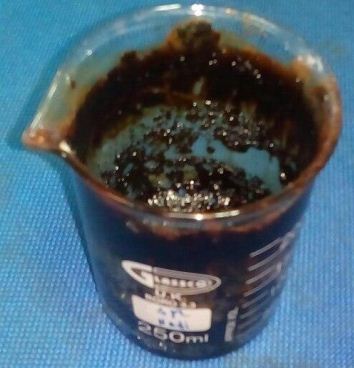
Figure: Ethanol extract of Swietenia mahagony leaves.
Different studies along with phyto chemical screening were done in the laboratory with the ethanol extract of the Swietenia mahagony leaves.
Phyto chemical screening
Exploration of phyto-chemicals is a standard method that identifies and appreciates plant materials via chemical resolution. It is associated with phytochemical analysis. Through this analysis abuzz compounds are isolated and subjected for further analysis that determined the attributes of the compound as well as toxic effects.
In this research work ethanol extracts of Swietenia mahagony were subjected for analysis to check the presence of phyto-chemicals such as carbohydrates, saponins, flavonoids, tannins, glycoside, steroids and alkaloids.
Concoction of the extract
Ethanol extract of Swietenia mahagony were taken and pigments were removed using activated charcoal and other contaminants by straining.
Concoction of sample solution
Very small amount of extracts were taken which was dried and decolorized and treated properly to make sample solution which further subjected to diverse phyto-chemical analysis.
Tests for chemical groups
Leaf extracts of Swietenia mahagony were tested to identify various chemical groups present in it. Different reagents that has been used are given below
For identification of Carbohydrates reagents used
- Molisch reagent
- Fehling’s reagent 10% Potassium dichromate
For identification of Flavonoids reagents used
- Zinc powder
- Concentrated hydrochloric acid
For identification of Tannins reagents used
- 10% Pottasium dichromate
- 1% Lead acetate
- 5% Ferric chloride
For identification of Proteins reagents used
- Millons reagent
- 10% sodium hydroxide and 3% copper sulfate
For identification of Alkaloids reagents used
- Mayer’s reagent
- Hager’s reagent
- Dragendroff’s reagent
For identification of Glycosides reagents used
- Aqueous sodium hydroxide
For identification of Glucosides reagents used
- Fehling’s reagent
- Sulfuric acid
Apparatus
- Test tube
- Bunsen burner
- Test tube holder
Preparation of reagents used for different chemical group tests
Mayer’s reagent
Mayer’s reagent were prepared by taking 1.36gm of mercuric iodide in 60ml of water and mixed with a solution containing 5gm of potassium iodide in 20ml of water. The final volume was adjusted to 100ml.
Dragendroff’s Reagent
Dragendroff’s reagent was prepared by taking 1.7gm of basic bismuth nitrate and 20gm tartaric acid. They were dissolved in 80ml water. This solution was mixed with a solution containing 16gm potassium iodide and 40ml water. This mixture was diluted 10 times using 10% picric acid before demeanour.
Hager’s reagent
Hager’s reagent was obtained by treating 1% solution of picric acid in water.
Fehling’s solution A
34.64gm of copper sulphate was dissolved in a mixture of 0.50ml of sulfuric acid and sufficient water was added to get 500ml.
Fehling’s solution B
176gm of sodium potassium tartarate and 77gm of sodium hydroxide was added in sufficient amount of water to make the final volume 500ml. Equal volume of solution A and solution B was added at the time of use as final solution of Fehling’s reagent.
Molisch reagent
2.5gm of pure alpha- Naphthol was dissolved in 25ml of ethanol to get Molisch reagent for identification of carbohydrates.
Test procedures used for the identification of various chemical groups are given below-
Test for carbohydrates
- Molisch’s test
2ml solution of the ethanol extract of Swietenia mahagony was taken in a test tube. 2 drops of freshly prepared 10% alcoholic solution of alpha- Naphthol was taken in the test tube and thoroughly united. Then, 2 ml of concentrated sulfuric acid was given to flow down the side of the inclined test tube so that the acid creates a layer under the aqueous solution. A red or reddish violate ring was formed at the concourse of the two layers if a carbohydrate was present. A dark purple solution was formed on standing or on shaking.
Again, the test tube was shaken and allowed to stand for 2 minutes, and then it was diluted with 5 ml of water. A dull violate precipitate was formed immediately which ascertained the appearance of Carbohydrates.
- Fehling’s test
2 ml of an ethanol extract of Swietenia mahagony leaves was taken and 1ml of a mixture of equal volumes of Fehling’s solutions A and B were added with the extract. It was boiled for a couple of minutes. A red or brick- red precipitate was formed immediately which ensured the attendance of carbohydrates.
Tests for Flavonoids
0.5 ml of the ethanol extract of Swietenia mahagony leaves was taken in a test tube. Then a small amount of zinc powder and 5 to 10 drops of concentrated Hydrochloric acid was added with the solution. This was boiled for about 1-2 minutes. Red or crimson color was developed which confirms the availability of flavonoids.
Tests for Tannins
- Ferric chloride test
5ml solution of the leaves extract was taken in a test tube. Then 1ml of 5% Ferric chloride solution was added to it. Greenish black precipitate was formed which confirms the presence of Tannins.
- Potassium dichromate test
5ml solution of the extract was taken in a test tube. Then 2ml of 10% Potassium dichromate solution was added to it. A yellow precipitate was formed which confirms the presence of Tannins.
- Lead acetate test
5ml of an aqueous extract of the plant material was taken in a test tube and few drops of 1% solution of lead acetate were added to it. A red or brownish red precipitate was formed which assured the abundance of tannins.
Test for Saponins
- Frothing test
0.5ml of alcoholic extract was diluted to 10ml using distilled water and then shaken in a graduated cylinder for about 3-5 minutes. Formation of persistent frothing dictates the presence of saponins.
Test for Alkaloids
- Mayer’s test
2 ml solution of the extract of plant material and 0.2ml of dilute hydrochloric acid were taken in a test tube. Then 1ml of Dragendroff’s reagent was added to it. Formation of orange brown precipitate indicated the presence of alkaloids.
- Hager’s test
2ml solution of the extract and 0.2ml of dilute Hydrochloride acid were taken in a test tube. Then 1ml of Hager’s reagent was added to it. Yellow crystalline precipitate was formed which confirmed the appearance of alkaloids.
- Dragendroff’s test
2ml of the plant extract and 0.2ml of dilute Hydrochloric acid was taken in a test tube. Then 1ml of Dragendroff’s reagent was added to it. Presence of orange brown precipitate confirmed the appearance of alkaloids.
Test for Proteins
- Millons test:
A minute portion of an aqueous extract of the plant material was taken in a test tube. Then 5-6 drops of Millons reagent was added to it. White precipitate which was formed turned red on heating indicates the appearance of proteins in the sample.
- Biuret’s test:
1ml of aqueous extract of the plant material was taken in a test tube. Then 5-6 drops of 10% sodium hydroxide solution and 1-2 drops of 3% copper sulfate solution were added to it. A red or violet color confirms the presence of proteins in the sample.
Test for Glucosides
A small amount of an alcoholic extract of the plant material was dissolved in water and alcohol. It was boiled with Fehling’s solution A and B. Presence of yellow color in the solution confirms the presence of glucosides.
Again another portion of the extract in water and alcohol was dissolved. This was boiled with a few drops of dilute sulfuric acid and was neutralized using sodium hydroxide solution. It was again boiled with Fehling’s solution A and B. A brick red precipitate was formed which confirms the presence of glucosides.
Test for Glycosides
A small amount of alcoholic extract was dissolved in 1 ml of water and a few drops of aqueous sodium hydroxide solution were added to it. A yellow color develops that confirms the presence of Glycosides.
Table of Observations of different chemical group tests
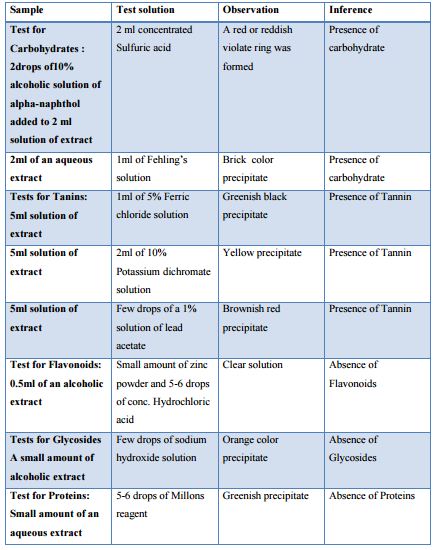
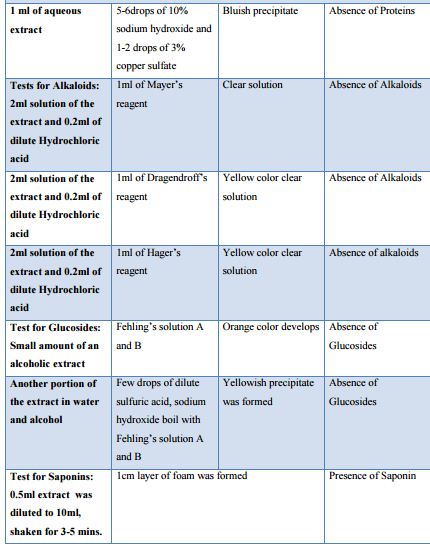
Membrane stabilizing activity
In this analysis, ethanol extracts of swietenia mahagony were subjected to membrane stabilizing activity. The extract inhibited heat and hypotonic solution induced haemolysis of erythrocytes in vitro. Acetyl salicylic acid were used here as reference standard at 0.1mg/ml. Blood sample was collected from fresh volunteer, who doesn’t have anti-inflammatory or contraceptive drugs at least since three weeks. Three healthy volunteers were taken age range from 23 to 28yrs, two were female among them. The membrane stabilizing activity of the extracts was assessed by using hypotonic solution-induced and heat-induced human erythrocyte haemolysis. To ripen the erythrocyte suspension, blood was obtained from healthy human volunteer by using sterile syringes that contains anticoagulant (3.1% Na-citrate). The collected blood was centrifuged and blood cells were washed three times with 154Msodium chloride solution in 10mM sodium phosphate buffer at pH 7.4, centrifugation was done for about 10minutes at 3000 rpm( rotation per minute)
Apparatus and reagents
- Measuring cylinder
- Beaker (1000ml, 500ml)
- Test tube
- Falcon
- Glass rod
- Spatula
- Butterfly needle
- Syringe
- Hydrated sodium phosphate
- Sodium citrate
- Sodium chloride
- Potassium hydrogen phosphate
- Distil water
- Micro pipette
Preparation of Na- phosphate buffer (pH 7.4) (solution -1)
For buffer preparation, 0.3gmof potassium hydrogen phosphate were dissolved along with 3.581gm of Na- phosphate and 5.85gm of sodium chloride in 500ml of distil water and pH was adjusted to 7.4
Mass of hydrated sodium phosphate is 358.1
1Molar preparation of hydrated sodium phosphate requires 358.1 gm of hydrated sodium phosphate which is dissolved in 1000ml of distil water Therefore, 0.01Molar requires 3.581gm of hydrated sodium phosphate dissolved in 1000ml of distil water
Again, if we prepare 0.01Molar of hydrated sodium phosphate buffer it will require 1.7905gm of hydrated sodium phosphate dissolved in 500ml of distil water 0.01M of sodium hydrogen phosphate was prepared and therefore 1.7905 gm of sodium hydrogen phosphate were dissolved in 500ml of distil water.
Preparation of 154mM sodium chloride in 10mM hydrated sodium phosphate buffer (solution-2)
For 1Molar of sodium chloride preparation 58.5g of sodium chloride is required to dissolve in 1000ml of sodium phosphate buffer. Therefore, for 50mM or .05M sodium chloride preparation 9.01gm of sodium chloride was dissolved in 1000ml of hydrated sodium phosphate buffer
Preparation of 50mili molar NaCl in 10mM hydrated sodium phosphate buffer (solution -3)
For 50mili Molar or .05M sodium chloride preparation, 2.925gm of sodium chloride was dissolved in 1000ml of hydrated sodium phosphate buffer.
Preparation of Sample
1mg of sample which is an ethanolic leaf extract of swietenia mahagony was dissolved in 1ml of distil water. Therefore, for 20 ml preparation 20mg/0.02gm of sample was dissolved in 20ml of distil water
Preparation of Standard
0.1mg of acetyl salicylic acid was dissolved in 1ml of distil water. Therefore, .002gm of acetyl salicylic acid was dissolved in 20ml of distilled water for 20 ml preparation.
3.1% Na- citrate preparation
3.1gm of Na citrate was dissolved in 100ml of distil water which was used as anti- coagulant in this assay.
Erythrocyte suspension preparation
Three healthy volunteers were taken age range from 23 to 28. Four falcons were taken for each volunteer. 20ml of blood were withdrawn from each volunteer by using butterfly needle and single used syringes. The collected blood was placed into a pre labeled falcon, each will be of 5ml of volume. The falcons were pre filled with 1ml of 3.1% of sodium citrate solution so that the blood doesn’t clot. After filling, the tubes were taken to the centrifuge machine to centrifuge them for about 10 minutes at 3000rpm. After finishing centrifugation, the supernatant was washed out and same amount of the remaining solution, 0.154M of sodium chloride in 10mM Na –phosphate buffer (solution-2) was added. Centrifuge the falcons for 10minutes at 3000rpm. The tubes were centrifuged more two times by same procedure.
Heat- induced hemolysis
1ml of distil water and 1 ml of erythrocyte suspension was taken in one falcon tube. Similarly, 1ml of standard and 1ml of erythrocyte suspension were taken in another falcon tube. 1ml of sample (plant extract) and 1ml of erythrocyte suspension were taken in another falcon tube. Two sets of falcons were taken of similar content. One set of the tubes was then placed into 54degree centigrade water bath for 20 minutes. After that, they were subjected to centrifuge at 1300rpm for 3 minutes. The tubes were taken to measure the absorbance of the supernatant at 540nm wavelength. Another set of the tubes was placed into ice bath at 0-5degree centigrade for 20 minutes. The tubes were taken after 20 minutes and were centrifuged for 3 minutes at 1300rpm.
Finally, the supernatant was taken to measure the absorbance at 540nm. This procedure was same for all three volunteers.
Hypotonic induced hemolysis
For control preparation, 500 micro liter erythrocyte suspension and 1ml of distil water along with 5ml of 50mM sodium chloride in10ml of sodium phosphate (solution-3) were taken in a tube. This was then incubated at room temperature for 10 minutes. It was centrifuged for 10 minutes at 3000rpm. After centrifugation, the supernatant was collected and the absorbance was observed at 540nm.
For sample and standard preparation, 500micro liter erythrocyte suspension, 5ml of hypotonic solution and 1ml of sample and/or standard was taken. This was incubated for 10 minutes at room temperature. It was then subjected to centrifugation for 10 minutes at 3000rpm. Then the supernatant was taken to measure the absorbance at 540nm.
Brine shrimp lethality bio-assay
Brine Shrimp lethality bioassay is a fast and extensive bioassay technique for the bioactive components of innate and spurious radix. Through this procedure, natural product fractions, extracts as well as the rare components can be evaluated for their efficacy. The method applies in vivo lethality in an elementary zoological existence (Brine nauplii) as a favorable monitor for screening in the invention of revolutionary incredible natural products.
Advantages
The Brine Shrimp assay has advantages of being fleet (24 hours), economical, and facile (e.g., no aseptic technique are vital). It effortlessly exploits an ample number of entity for statistical corroboration and craves no extraordinary accessories and a comparatively meager amount of sample (2-20 mg or less) is needed. Furthermore, it does not require animal serum as in essential for cyto-toxicity assays.
Materials
- Di methyl sulfoxide (DMSO)
- Artemia salina Leach. (Brine eggs)
- Small tank with perforated dividing dam to hatch the Shrimp
- Lamp to attract Shrimps
- Pipettes (5, 25ml) and Micropipette (100-1000µl)
- Glass vials, Magnifying glass
- NaCl ( Molla salt)
- Distil water
- Cotton
- Beaker (1000ml)
- Glass rod
- Spatula
- funnel
Preparation of spurious seawater
76 gm of sea salt (pure NaCl) was measured by rough balance and dissolved in two liter of distilled water in a large beaker with the help of spatula through stirring and were poured in a small tank and then filtered off with cotton to get diaphanous solution. Thus obtained spurious seawater was for hatching of brine shrimp (Artemia salina).
Hatching of Brine Shrimps
Artemia salina leach (Brine Shrimp eggs) which was collected from pet shops of Katabon was used as the test organism. Imitated sea water was taken in a small tank and Shrimp eggs were combined to the one side of the perforated divided tank and then this side was covered. The tank was kept under incessant aeration for 48 hrs to hatch the shrimp and to be matured as nauplii (larvae) which is shown in figure 3.2. The hatched Shrimps were attracted to the lamp through the perforated dam and with the assistance of a pasture pipette 10 living Shrimps were collected and kept into each of the test tubes containing 5 ml of Brine solution.
Preparation of Test Solutions
Swietenia mahagony ethanolic leaves extracts were taken about 5mg and was dissolved in DMSO (Di methyl sulfooxide). Finally, the concentration was adjusted to 320µg/ml that was distributed as the parent solution. A succession of solutions of fewer concentrations was raised by serial dilution with DMSO. From each of these test solutions 50µl were added to pre-marked glass vials/test tubes containing 5ml of spurious seawater and 10 shrimp nauplii. So, the ultimate concentration of samples in the vials/test tubes was 320µg/ml, 160µg/ml, 80µg/ml, 40µg/ml, 20µg/ml, 10µg/ml, 5µg/ml, 2.5µg/ml, and 1.25µg/ml consecutively.
Preparation of positive control
Vincristine sulphate was supplied as the positive control in this assay. Vincristine sulphate was taken in a beaker and dissolved in DMSO to get an initial concentration of 20µg/ml from which serial dilutions were made using DMSO to get 10µg/ml, 5 µg/ml, 2.5 µg/ml, 1.25 µg/ml, 0.625 µg/ml, 0.3125 µg/ml, 0.15625 µg/ml, 0.078125 µg/ml, 0.0390 µg/ml respectively. The control groups containing 10 living Brine Shrimp nauplii in 5ml simulated seawater took the positive control solutions.
Preparation of negative control
For the preparation of negative control, 30µl of DMSO was added to each of the pre-marked test tubes that contains 5ml of simulated seawater and 10 shrimp nauplii. The test tubes were then kept at room temperature for 24 hrs under the light and air to observe the endurance proportion.
Counting of Nauplii and exploration of Data
The test tubes were monitored after 24 hours using a magnifying glass under bright light and the number of alive nauplii was counted. The percent (%) death was calculated for each single dilution. The concentration-death data were calculated by using Probit analysis. The influences of the concentration-mortality relationship of plant sample are generally expressed as a median lethal concentration (LC50) value. This signifies the appearance of the chemical that creates death in half of the test subjects after a particular period of time.
Discussion
A study was done where Swiwtenia mahagony were treated with four different solvent including chloroform, ethanol, petroleum ether and aqueous extracts. The result obtained from the phytochemical evaluation revealed that, this plant contain different phyto-chemicals such as tannins, alkaloids, flavonoids, terpenoids, reducing sugars, anthraquinones and glucosides. It was reported that terpenoids, flavonois and tannins different degree of anti-bacterial characteristics particularly on Escherichia coli, Staphylococcus aureus, Pseudomonas aeruginosa, Salmonella typhi and Streptococcus pyogens etc. Because of this report, an analogous study was carried out to check the anti- bacterial activity of this plant as it was confirmed that this plant contain flavonoids, tannins and terpenoids. Flavonoids structure has a strong relationship on antibacterial activity. Chloroform extracts and petroleum ether extracts of this study has delivered well anti-bacterial action as they contain terpenoids and flavonoids. Another phyto-chemical, tannin, also showed good anti-bacterial action while tested on microorganisms. Among different types of microorganisms, S. aureus was the most resistant to tannins followed by Pseudomonas aeruginosa, Escherichia coli, Streptococcus pyogens, Proteus vulgari and Salmonella typhi.
Moreover, both aqueous and ethanolic extract was found to exert anti-microbial activity as they contain tannin. Additionally, due to presence of terpenoids, ethanolic extracts and petroleum ether delivers well anti- bacterial action. (Ayyappadhas et al., 2012).
A study was employed using methanol bark extract of Swietenia mahagony to justify thrombolytic, membrane stabilizing activity as well as cytotoxic activity. While considering cyto-toxicy analysis using brine shrimp, the extract impart significant cytotoxic activity. It was observed from the data analysis, that all the fractions gave LC50 ranging from 0.01μg/ml to 4.70 μg/ml. In addition, vincristine sulphate which was used as positive control gave LC50 0.45 μg/ml. Moreover, thrombolytic activity was assessed using streptokinase as reference standard.
The result obtained from the assay showed that streptokinase which was incorporated as reference standard, demonstrated 66.67% lysis(break down) to clot whereas methanol soluble fraction exerted 65.54% lysis to clot in case of bark of Swietenia mahagony. Membrane stabilizing activity was also assayed to evaluate the action of lysis of human erythrocyte membrane induced heat and hypotonic solution where acetyl salicylic acid (0.10 mg/mL) was employed as reference standard. Therefore, it was explicit that the result of Swiwtenia mahagony methanolic extract of bark impart moderate activities specially cyto-toxicity analysis and thrombolytic assay. Moreover, the extract showed fair effectiveness in case of membrane stabilizing activity. (Akter et al., 2014)
A similar study was carried out incorporating methanol and aqueous extract of Swietenia mahagony leaves and it was found from the study that the leaves contains saponins, glycosides, flavonoids, carbohydrates, terpenoids among which tannins were present significantly. It was assumed that, the presence of such phyto-chemicals can deliver impressive anti-oxidant and hypoglycemic activity. (Matin et al., 2013).
Medicinal plants are enriched with numerous bioactive compounds which can be used to treat various types of diseases as because they are readily available and cost-effective. They can be extensively explored for their potential pharmacological actions. A study was commenced to evaluate the safety of Swietenia mahagony. In the study it was observed that there was no sudden negative effect like allergic reactions or hypersensitivity on administering leaf powder of Swietenia mahagony. (Naveen and Urooj, 2015). Primary phyto- chemical screening of ethanol extract of Swietenia mahagony was done which exhibited the presence of Tannins, Saponins and Carbohydrates. This study reveals that the leaves extract (ethanolic) do not contain Flavonoids, Proteins, Alkaloids, glycosides.
Membrane stabilizing activity of ethanol extract of Swietenia mahagony leaves was done which shows minimum effect on erythrocyte membrane stabilization as considering student t-test and outcome was insignificant which was obtained in table 4.2.2.1 and table 4.2.2.4 as P< .05 is considered as significant. The possible cause of this result might be due to the amount of volunteer taken. If more (more than 3) volunteer could be incorporated, then more precise result can be obtained.
Cyto-toxicity study which commenced using brine shrimp is a useful technique to predict the cyto-toxic effect, anti-tumor activity as well as pesticidal activity of any sample of natural origin. It further indicates anti-plasmodial, anti-filarial, anti-malarial and anti-viral effect of any sample. In this study, ethanol extracts of Swietenia mahagony leaves showed 1.53μg/m in contrast vincristine sulphate which was used as positive control showed 0.52μg/m. A graph was plotted considering log concentration against %of death which gives approximately linear correlation between them. The inhibitory effect of the ethanol extract might be due to presence of toxic components and it recommends further study for more authentic outcome
Conclusion
The consequence and comparison of the study on ethanol extract of Swietenia mahagony leaves on phyto-chemical screening, membrane stabilizing effect as well as cyto-toxicity delivers effective information that can be further employed for isolating abuzz compounds as well as for different traditional purpose significantly. Moreover, it requires further study that can be based on different parts of the plant other than leaves such as bark, stem, fruit, seed or may be flowers as well as various other solvents can be incorporated like methanol, acetone, chloroform etc and monitor a variety of extensive study including anti-malarial, anti- diabetic, anti-viarl, antispasmotic, anti-bacterial and many more to obtain operative information and development of crude physic widely. Swietenia mahagony is such a plant that can be accepted and subjected for different analysis without any scruple. Different fragments of this plant can be explored to identify and isolate several active compounds that can be beneficial for medicinal purpose.
Though, methanol was also considered to be taken in the current study, but because of lack of time it couldn’t be done and is kept in consideration for further research.
